SonicPlanet StarWaves Review
Dr. Sinan Bökesoy, of SonicLAB fame, has premiered a new music composition / sound design paradigm for iOS and MacOS under the SonicPlanet umbrella called StarWaves. It is absolutely mind-bending and showcases Bökesoy’s unique imagination when it comes to pushing experimental music software into the future.
There certainly has been a trend as of late of challenging the typical “submarine control panel” (dials, knobs and sliders) to something that’s more whimsical, fun and playful. However, Bökesoy takes this movement into space, literally, by creating unique interactions between elements in a three-dimensional world. Bökesoy describes this as “an audiovisual scene architect, the embodiment of sound, space and visual design rolled into one.” We call it awesome!

For a limited time only! Up to 80% off all Waves Bundles. PLUS click the banner above or the Go button for an additional 10%! This is Waves best deal yet! Get yours today before this special ends! GO!
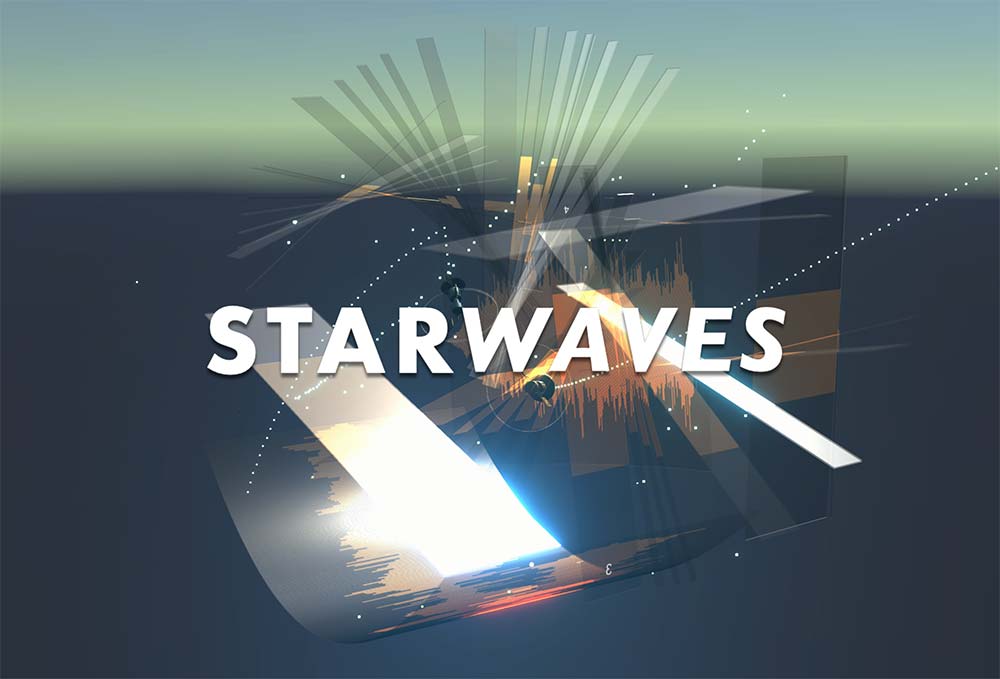
So what exactly is StarWaves after all? It’s a granular sample player with an audio visual interface like no other. It allows you to manipulate two key elements, an Emitter and a Platform Block in a 3D space. The Emitters, which look like orbiting satellites, spray either beams or balls. The Platform Blocks are visual representations of samples. In the simplest of terms, when the balls or beams contact the blocks, they trigger a sound. However, that’s only the tip of the iceberg.
Before we get rolling, the answer to your big question is yes, you can upload your own samples. Because Bökesoy is selling StarWaves inside Apple’s closed “Sandbox” ecosystem, it’s not as simple as uploading them from the interface. You have to find the correct folder and deposit the mono 16bit .wav files there yourself – interestingly, .aif and stereo files are not supported at this time.
StarWaves visual interface arrives with a couple of themes, but you can purchase more to expand your palette. You can think of the themes as different space environments with slightly different colors and backgrounds. They’re fun and somewhat arbitrary, but don’t do anything to change the audio of StarWaves.
In another in-app purchase, SonicPlanet does charge you an extra $/€10 to add MIDI/OSC functionality to StarWaves, which may rub some folks the wrong way, but it does allow you to modulate the software with a MIDI controller, broadening the possibilities.
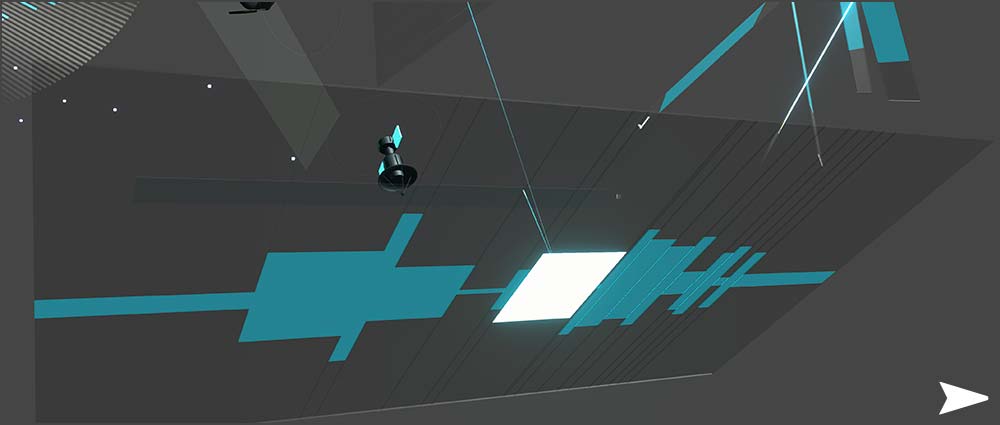
StarWaves Platform Block that contains a single mono sample
As mentioned above, the interface consists of two elements, an Emitter and a Platform block. You’re allowed to have two Emitters and up to four Platform Blocks in orbit at one time. The Emitters can either shoot constant energy beams or ping pong balls at the platforms to play sounds. StarWaves calls these balls particles, but we’ll stick to balls, since that’s more indicative of their behavior. The Platforms, which look like boardwalks, are made up of planks that represent a slice of the mono sample. Thus, when one of the beams or balls comes in contact with a plank, it triggers that part of the sample.
The Emitter satellites can rotate on the X, Y and Z axises to target the platforms. The X Dim/YDim sliders determines the size of the field where the balls or beams are dispensed. Thus, you’re not limited to shooting balls out of a single barrel, it can broadcast out of a plane size of your choosing. The Emitters can either be static or auto rotate, allowing your to shoot the beams or balls with a singular focus, or all around in a 360º arch. If that’s not nutty enough for sonic mayhem, you can make the beams or balls “bounce” when they hit a platform. This allows you to position the Platforms so the balls and beams ricochet off one to hit another. Last, but not least, you can then control the rate and speed of the balls being shot out with a set rate or utilizing the randomization sliders.
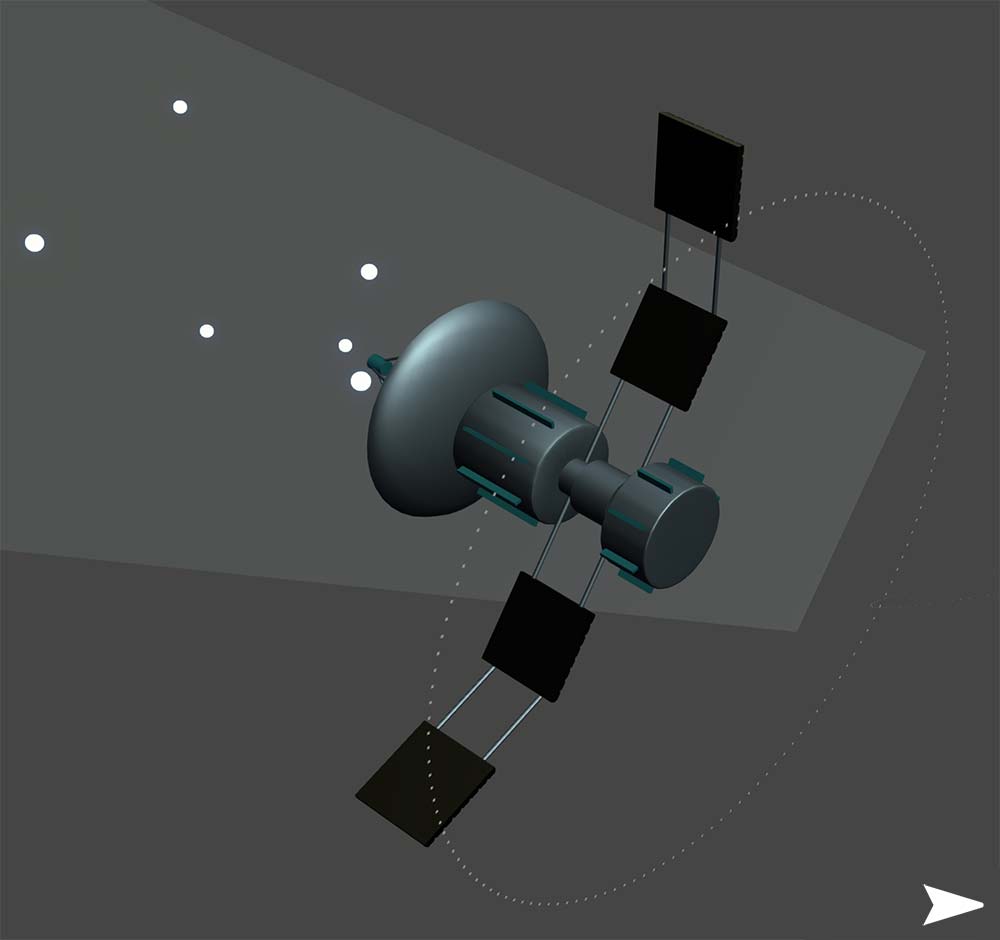
A StarWaves Emitter shoots either laser beams or balls (particles) at the Platform Blocks
The result is absolute pandemonium, but in a good way. If you use more set values, instead of randomization, then your creation will be more of a sequence of the samples. If you choose a more arbitrary approach, then it will be more chaotic and experimental.
The only caveat is how much turmoil your iPad or computer can handle. If there’s too much commotion, StarWaves will crash and require a reboot. StarWaves does cry out in pain when taxed to let you know you’re entering unequal footing. The sound starts to get crunchy and the visuals stagger just before bonking.
The Platforms, where your sample resides, can be tweaked. The granular samples Platform can be comprised of a single slab, or up to 250 of them. The more slabs, the smaller the amount of sample data that will be played back when hit with a ball or beam from an Emitter. From there, you can change the curvature of the platform and if that’s not enough, you can scatter the planks to create interesting sculptures that will dispense the balls or beams every which way.
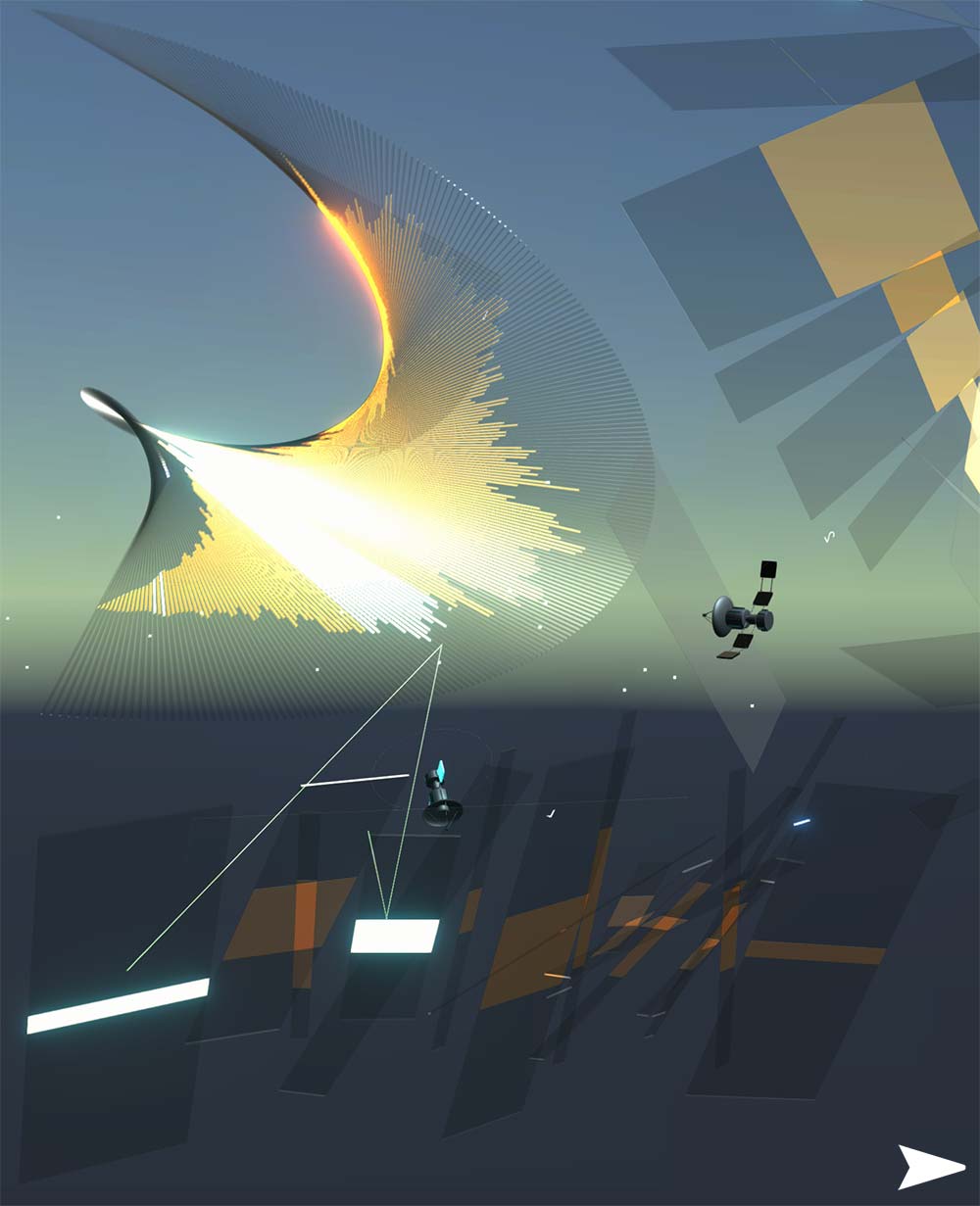
FutureMusic: Sinan, when developing StarWaves, what was the first aspect of the concept that you developed, the Emitter or the Platform Blocks?
Dr. Sinan Bökesoy : I wanted to create a DAW like environment in 3D, unlike any known paradigms. For the visual environment, I like minimalistic approach and that things develop themselves in their natural visual beauty by inherent dynamics and the science in behind. I started to focus on a particle emitter which has the task of triggering events. Then I have imagined a light beam and then the natural interactions of particles and beams when they hit objects. And what could I extract from such a kinematic system.
I imagined how I could represent the audio data in space, and that it interacts in that very space. The audio data has become 100’s of rigid bodies and their dimensions representing the level and the duration of the audio chunks in space. A non-gravitational environment lets the emitter particles move in beautiful expansions when continuously rotated on different axis and speed. The feeling that we can float and navigate in that space is also the feeling of freeing the mind, like reset. All these dynamics started to become a choreography of a space dance theater, or opera. And transitions between these scenes set the actors of this scene in continuous motion.
FutureMusic: Did you always foresee it taking place in Space? Or did you contemplate other environments?
Dr. Sinan Bökesoy: Did I consider other environments? I believe a scene of deep ocean with its particular imaginative acoustics would be worth trying.

Dr. Sinan Bökesoy seemed to run out of gas when designing the parameters interface
There is an effects section, which is somewhat buried inside of the SO1/SO2 area (PL DSP), but this is the least flushed out section of StarWaves and underwhelming. It may be a conscious choice by Bökesoy in order to limit the burden on the computer’s processor, but it feels like this could have been a much more exciting arena for the user to explore. You can experiment with the relationships between Platforms and Emitters, as far as distance and where the balls / beams encounter each Platform to modulate the Pitch Shift, Delay and Reverb, which is unique, but we found the interface to be somewhat challenged to take full advantage of this concept. In fact, a graphical representation of the effects, in the form of a black hole or ozone field could be a dynamic prospect in a future version.
StarWaves Features:
- Experimental 3D Environment For Sonic Exploration
- Unique Sequencing Paradigm
- Supports 16bit Mono .WAV Files
- MIDI/OSC Compatible
- Ability To Record Creations
- iOS or MacOS Compatible

The easiest way for electronic musicians to get their music onto Spotify, Apple Music, iTunes, Amazon Music, Tidal, Instagram, Facebook, TikTok, Pandora, Twitch & much more! Click the banner above or the Go Button to save 7% off of your signup! GO!
In the Sequencer section, StarWaves offers five State Slots where you can save five different instances of the scene. The five numbered buttons on the top row allow you to call back the saved states. To save your own scene state, simply click on one of the numbers on the bottom row. From here, you can sequence the states in the middle section by simply entering the scene sequence on the left and the transition time, in seconds, between them on the right. To start the sequence you have to hit the middle button below to toggle between pause and play. This isn’t intuitive and could have been handled better graphically in the form a typical Play Arrow Button.
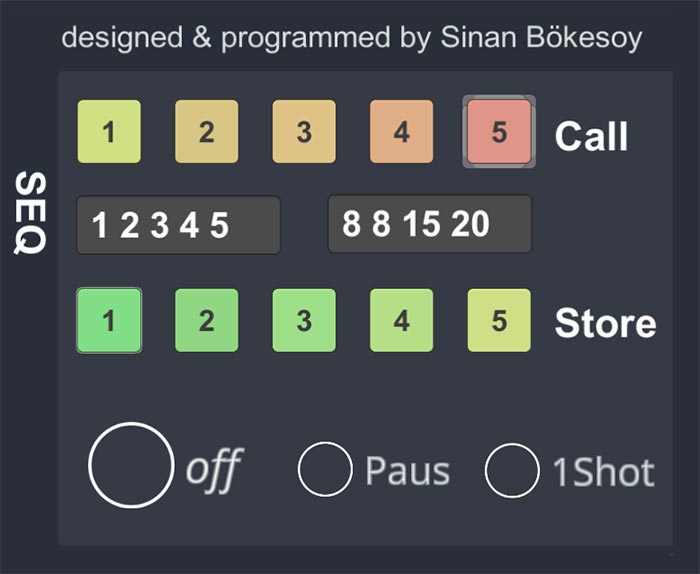
If you like what you’ve accomplished, StarWaves gives you the ability to record the audio with no set limits I could determine. Unfortunately, you can’t record video as well, which is a miss (see The Future below). Even though there isn’t much you can do to control the panning, the recorded output is in stereo with distinct left/right channel information.
Conclusion
StarWaves is one of the most intoxicating experimental audio environments we’ve encountered in a long time. The fundamentals behind the concept really gets you contemplating the possibilities, even when you’re not using the program on a Mac or iPad. It’s that thought-provoking. What’s even more exciting is that this is only version 1.0 of Bökesoy’s creation and there are many ways he can expand and enhance StarWaves in the future. For only $10, it’s worth every penny and will get you looking at sound in a whole new way. It’s certainly not without its faults, but we have to salute Bökesoy’s grand effort. Highly Recommended.
SonicPlanet StarWaves Rating: 90%
Cheers:
+ Fun
+ Innovative
+ Intelligent
+ Intoxicating
+ Dynamic
+ Visual paradigm
+ Manual
+ Video Tutorials
Jeers:
– CPU Intensive
– Sound Quality
– 16 bit Mono Samples
– Limited Effects
– Parmeter Interface
– Can Crash Suddenly
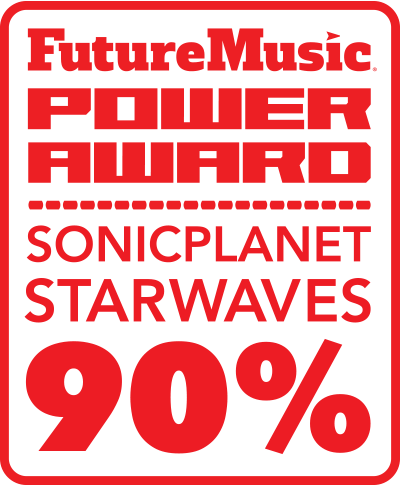
SonicPlanet’s StarWaves for iOS or MacOS costs $10 / €10. (MIDI/OSC connectivity costs $10 / €10 extra.)
The Future: Using StarWaves immediately brought up some features and enhancements we’d love to see in future versions. First and foremost, Bökesoy needs to provide the ability to record video and not just audio from a user’s sessions. I can’t think of a more viral way of promoting his thought-provoking creation than to have users share their sequences on social media platforms. Programing the camera moves would also be a great way to obtain quality visual results.
The second item that’s a must is a CPU meter. This way you can tell if you’re getting close to bonking and be able to modulate your actions and scale back a bit. As of now, the only indication is the interface slows down and the audio gets crunchy. Often times, this happens suddenly and you have no idea you’ve pushed StarWaves too far until it’s too late.
Since Bökesoy didn’t nearly put as much effort into the parameter interface as the rest of the visuals, and it’s somewhat cryptic, simple Rollover Hints of each items function would be a wonderful addition in an update. Bökesoy did a nice job with the manual, but Hints, that you could toggle on or off, would make a world of difference.
We’d love to see StarWaves incorporate distinct stereo panning control into the interface. With its 3D environment, we’re instantly inclined to ask for surround sound, but that could be a lot to ask for. However, with Bökesoy’s unique environment, modulated panning would be just awesome.
For the Emitters, it would be great if you could change the length of the balls to create different timing. For example, instead of just shooting out the ping pong balls like a rail gun or puckering out at a slow rate, the ability to change the actual length – think pill shape – so they trigger the planks on the platforms at different note lengths would work beautifully. Lastly, the ability for them to splatter on contact into micro balls for additional interaction would also be interesting.
Bökesoy incorporated some advanced thinking into the effects section, but as cited above, the audio quality and attributes of the effects should be enhanced. There is just so much potential here for sonic exploration, especially with the addition of stereo control.
Finally, what if StarWaves came out with a version that dropped the audio engine entirely and just acted like a MIDI controller for other synthesizers, both hardware and software, including those with MIDI Polyphonic Expression? This would open up the amazing visual metaphor to a wide variety of users and applications, while not having to contend with overwhelming the CPU.









